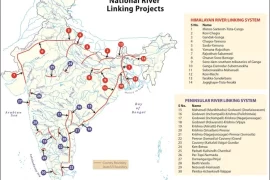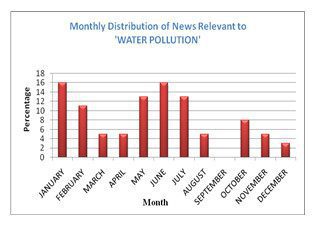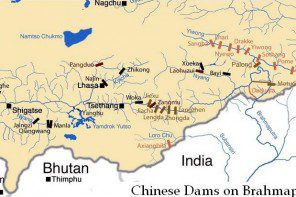Introduction
In the general context, the term “migration” is defined as “the movement of a person or a group of persons, either across an international border, or within a state. It is a population movement encompassing any kind of movement of people, whatever its length, composition and causes; it includes migration of refugees, displaced persons, economic migrants, and persons moving for other purposes, including family reunification.” More specifically, this article will look into the environmental aspects of migration, i.e. migration driven by climate change and environmental disasters. This type of migration can either be forced, i.e. the migration where any person who migrates to escape persecution, conflict, repression, natural and human-made disasters, ecological degradation, or other situations that endanger their lives, freedom or livelihood; for example, after an extreme climatic event that causes significant disaster to a specific area, individuals residing are often forced to migrate without their own accord, i.e. the individuals are subject to ‘forced displacement’. Consequently, voluntary migration is one where a person decides to relocate at for personal reasons and desires. The World Bank specifies that voluntary migration is a process by which a community’s assets and infrastructure are built in another location.
Causes of Migration
Migration is generally stimulated due to climatic and non-climatic factors. Climate change driven factors like floods, cyclones, salinity intrusion causes migration of individuals in South Asia and more specifically, in the rural areas of Bangladesh. The resultant consequences of climatic disasters affect vital resources adversely, which in turn restricts the individuals’ access to resources, and hence triggers migration. On the contrary, political conflicts, social insecurities (especially for women), lack of proper education for children, increased population density, work opportunities, etc. are among the non-climatic and social factors that generally drive migration in Bangladesh. Although the attention to climate induced migration has grown significantly in the recent years, migration due to social and non-climatic factors still remain a key concern in the books of the policymakers.
The climate change and migration nexus
The climate change and migration nexus has received attention in the last few years, and uncertainty remains about how populations are going to react in response to long term environmental change. About 20 years ago, the Intergovernmental Panel on Climate Change (IPCC) expressed concern that human migration has the potential to be one of the most drastic impacts of climate change. From this reference, it is imperative to identify that climate change will have worse implications in the future unless addressed properly, whereas, mitigation of greenhouse gases remains a key priority. However, Asian Development Bank (2012) reports that only mitigation will not be enough to curb the effects of climate change on the migrants, rather solid adaptation strategies with strict implementation should also be institutionalized in order to facilitate the scenario. Developing adaptation strategies with implementation will ultimately increase the resilience of people and communities to the adverse impacts of climate change. The study conducted by ADB (2012) features the case of South Asia, emphasizing that the region is expected to be subject to changes, i.e. transformation due to climate change, and in parallel, significant social, political and economic transformations. Hence it remains a key concern for policymakers to tackle the challenge imposed by climate change in order to reduce the expected overall impact on the migrants.
Climate change and migration: the Bangladesh perspective
It is understood that climate change has the potential to generate internal security concerns that can lead to violent conflict. It is also comprehended that among South Asia, India and Bangladesh are expected to feel acute impacts of climate change, given the impacts posed by extreme weather, rising sea levels, increased cyclonic activities in the Bay of Bengal, and the complex river systems at both the regions. In reference to the recent disasters, floods in September 2012 displaced 1.5 million people in India’s northeast state of Assam, while the Cyclone Alia displaced 2.3 million people in India and 850,000 people in Bangladesh.
It is imperative to understand that migration, internal and international labour migration of unskilled workers is seen as a coping mechanism to tackle the environmental and economic challenges (Siddiqui, 2005). The study conducted by Siddiqui (2005) identified that forty percent of unskilled migrants originate from 5 of the 64 districts in Bangladesh (Brahmanbaria, Chittagong, Comilla, Dhaka and Tangail). Unsurprisingly, these areas are environmental calamity prone areas and are subject to flooding and extreme climatic events. It is of significant relevance that for the case of Bangladesh, environmental factors work with economic forces in causing migration.
Addressing the Issue: Policy directives
Addressing the climate change and migration nexus is of key importance for the world in the 21st century. Table 1 displays four key mechanisms through which migration could be addressed. Migration, as mentioned previously, can be seen from a beneficial point of view as it can be a means of adaptation. Although migration comes with significant cost to the migrants, for the source communities, pressure on resources is reduced, while environment is alleviated and remittances can complement adaptation funds and improve the adaptation capacity.
On the other hand, it is important to invest freely in the area of research. It is imperative to understand uncertainties of how populations reach to environmental changes to facilitate decision making at the implementation level. This can be done by using modern data collection tools and improving the research capacities.
Regional and international cooperation has grown to be the solution to a growing number of conflicts around the world. Bilateral ties between trans-boundary nations are classically known to be beneficial for nations. It is important to improve current migration channels to accommodate the climate induced migrants. Human mobility has the potential to fill up skill gaps between cross-border countries.
| Activity | Description |
| Strengthening adaptation through migration |
|
| Improving knowledge base |
|
| International cooperation |
|
| Climate induced migration development agenda |
|
Table 1: Addressing climate change (Developed from ADB, 2012)
The study conducted by Bhattacharya and Werz (2012) identified some crucial factors that should be taken into consideration in the form of policy directives by the relevant authorities of Bangladesh, India and the United States. With rapid urbanization featuring prominently in Bangladesh and India over the last 2 decades, United States can provide the firepower to be a vital partner to tackle crisis scenarios for the two growing nations. Bhattacharya and Werz (2012) identified three structural backbones that could be of significant importance to curb the challenges faced by potential migrants in Bangladesh and India. This information is displayed in the table 2.
| Policy | Description |
| Climate vulnerable cities workshop |
|
| Diplomatic dialogue on migration |
|
| Ecological infrastructure development |
|
Table 2: policy directives proposed by Bhattacharya and Werz (2012)
Conclusions
In theory, it is often difficult to implement new theories and policies. Due to the different levels of understanding of migration and disaster risk, it is difficult to implement new policies across all regions. In order to tackle climate-induced migration scenario, an appropriate development framework needs to be developed, which would ultimately incorporate climate adaptation strategies. Vulnerable communities should be given special preference, and the displaced should be provided migration options. Responses will require significant investment and public resources. Governments across all levels have a vital role to play. There is a need for an open and informed debate at the international level, and a suite of policies couched within an international framework.
The writer is a Research Associate at Bangladesh Enterprise Institute.






